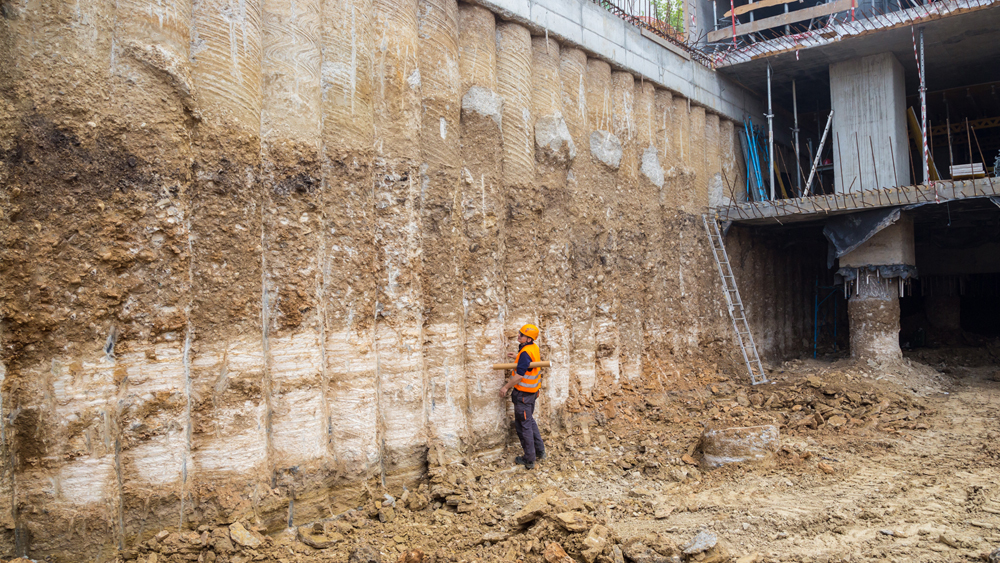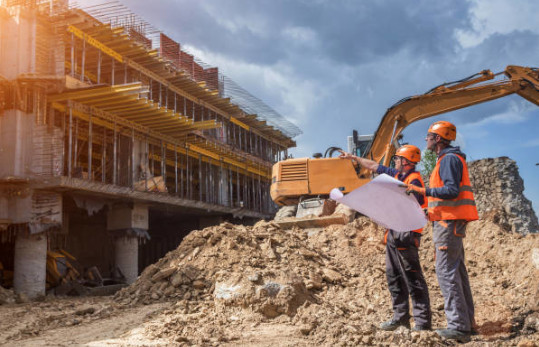Project Geotechnical Engineer for Tailored Website Evaluations
Wiki Article
Just How Consulting Engineers Enhance Geotechnical Design Projects: Insights Into Their Know-how, Techniques, and Collaborative Approaches
Consulting designers are pivotal in enhancing geotechnical design projects, applying their specialized knowledge to navigate the intricacies of subsurface problems. Their approaches incorporate a variety of site examination techniques, consisting of Criterion Penetration Examinations (SPT) and Cone Penetration Tests (CPT), which educate essential decisions during the design and building phases. In addition, their collective strategies foster communication amongst varied job stakeholders, eventually shaping the project's trajectory. As we analyze the multifaceted functions these experts play, it comes to be clear that their payments prolong past technological knowledge, prompting a closer check out the implications for project success.Duty of Consulting Engineers
The experience of speaking with engineers in geotechnical design is fundamental to the successful implementation of building and construction projects. These experts play a pivotal role in examining dirt and rock buildings, which are vital aspects affecting style and building choices. By conducting comprehensive site investigations, seeking advice from designers accumulate vital data that educates the design process, guaranteeing projects are developed on stable and suitable ground.Consulting engineers likewise provide important understandings right into danger monitoring (geotechnical geologist). They identify prospective geotechnical dangers, such as landslides, soil liquefaction, and settlement issues, making it possible for stakeholders to apply efficient mitigation approaches. Their know-how help in optimizing foundation styles, which can bring about considerable cost financial savings and enhanced safety and security
In addition, getting in touch with designers function as an essential link in between project owners, engineers, and contractors. Their capability to convert complex geotechnical information into actionable suggestions cultivates collaboration and promotes informed decision-making throughout the job lifecycle. This multidisciplinary method not just enhances task performance however also makes certain conformity with regulative standards and best techniques.
Trick Approaches in Geotechnical Engineering

One key approach is site investigation, which entails performing field examinations and laboratory analyses to collect information on subsurface problems. Strategies such as Standard Infiltration Screening (SPT) and Cone Infiltration Screening (CPT) are commonly used to assess dirt stratigraphy and toughness. Furthermore, geophysical approaches, including seismic and electric resistivity surveys, provide non-invasive means to analyze subsurface attributes.
One more crucial technique is mathematical modeling, which enables designers to replicate numerous scenarios and anticipate exactly how soil-structure communications will behave under different loading problems. Limited Component Analysis (FEA) is a typical technique employed in this context.
Furthermore, the design of foundations, retaining frameworks, and earthworks relies greatly on these techniques - geotechnical geologist. By incorporating innovative logical devices with field data, speaking with engineers can develop tailored services that deal with specific job obstacles, ultimately contributing to the stability and safety and security of construction projects
Significance of Soil Evaluation
Dirt evaluation works as a fundamental element in geotechnical design, supplying necessary understandings into the physical and chemical residential properties of soil necessary for reliable building preparation. Recognizing soil qualities is critical for establishing its load-bearing ability, water drainage habits, and possibility for negotiation or instability. Comprehensive dirt examinations, including sampling and lab testing, aid identify specifications such as soil type, wetness content, density, and shear stamina.
These analyses notify the choice of suitable building methods and products, inevitably influencing job safety and long life. For circumstances, cohesive soils might require different structure layouts compared to granular dirts, demanding customized design remedies. Dirt evaluation help in determining impurities that could position dangers to human health and wellness or the environment, allowing for the development of reduction methods.
Including soil analysis right into the beginning of task advancement assists to reduce unforeseen obstacles, guaranteeing that designers can anticipate and address potential issues before they rise. By developing a detailed understanding of the site problems, getting in touch with designers can optimize style efficiency and decrease costs, consequently boosting the overall success of geotechnical engineering jobs.
Collective Strategies in Tasks
Effective geotechnical projects often rest on collaborative approaches that bring together varied knowledge from numerous techniques. Efficient partnership among consulting designers, rock hounds, ecological scientists, and building professionals is critical for attending to complicated difficulties and optimizing project end results. By leveraging the unique skills and knowledge of each staff member, tasks can benefit from an all natural understanding of the site conditions, regulative needs, and design restraints.Regular communication read this post here and interdisciplinary meetings help with the sharing of understandings and foster a culture of team i loved this effort. These joint initiatives make it possible for the identification of potential risks early in the project lifecycle, permitting timely mitigation strategies. Including responses from stakeholders, consisting of regional neighborhoods and regulatory firms, makes certain that all viewpoints are considered, boosting project approval and compliance.
Additionally, the assimilation of advanced technologies, such as Geographic Info Solution (GIS) and Building Details Modeling (BIM), more boosts collaboration. These devices enable the real-time sharing of data and visualization of geotechnical conditions, promoting educated decision-making. Eventually, a collaborative strategy not just streamlines job execution but likewise lays the foundation for cutting-edge remedies to intricate geotechnical design challenges.
Effect on Job Outcomes

Consulting designers use innovative approaches such as threat evaluation and anticipating modeling, which improve the accuracy of job projections. Their capability to integrate cutting-edge modern technologies, like geotechnical instrumentation and information analytics, further improves the layout and building and construction processes. Consequently, projects Check Out Your URL experience enhanced efficiency, minimized costs, and decreased hold-ups.
In addition, cultivating efficient interaction and collaboration amongst team participants enhances analytic capabilities. When challenges emerge, an unified front enables swift identification of services, protecting against potential problems. Inevitably, the collaborative efforts of consulting engineers add to greater quality results, guaranteeing that projects fulfill both regulative requirements and client expectations.
Verdict

Report this wiki page